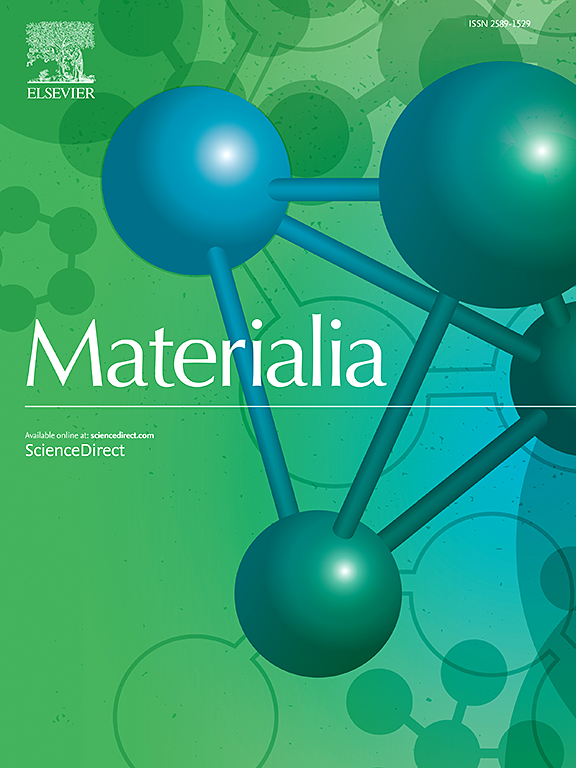Diverse kinetic pathways in shock-compressed phase transitions of a metallic single crystal
IF 2.9
Q2 MATERIALS SCIENCE, MULTIDISCIPLINARY
引用次数: 0
Abstract
Substantial gaps in solid-solid phase boundaries under hydrostatic and uniaxial compression have recently garnered great attention, though the underlying physics remains unclear. In this study, through molecular dynamics simulations of shock-compressed fcc Cu single crystals, we report pronounced orientation-dependent fcc-to-bcc phase transition pressures following the trend [100] < [110] < [111] ≈ thermodynamic phase boundary. We uncover a fundamental crystallographic law that explains these phase boundary gaps, rooted in the classical orientational relationship of martensitic transformations: the degree of alignment between loading directions and the easiest atomic moving path plays a critical role in determining phase transition pathways. The complex, orientation-dependent phase transition pathways and the observed temperature equilibrium efficiency ranking [100] > [110] > [111] further support the validity of this crystallographic law. This law is broadly applicable to fcc crystals, indicating that phase composition can be controlled by the method of compression, providing a new framework for selective polymorph formation.

金属单晶冲击压缩相变中的多种动力学途径
最近,静水压和单轴压缩下固-固相界的巨大间隙引起了人们的极大关注,尽管其基本物理原理仍不清楚。在本研究中,通过对冲击压缩 fcc 铜单晶进行分子动力学模拟,我们报告了明显的取向依赖性 fcc 到 bcc 相变压力,其趋势是 [100] < [110] < [111] ≈ 热力学相界。我们发现了一个基本的晶体学定律,可以解释这些相界间隙,其根源在于马氏体转变的经典取向关系:加载方向与最易移动的原子路径之间的对齐程度在决定相变路径方面起着关键作用。复杂的、取向相关的相变途径和观察到的温度平衡效率排名 [100] > [110] > [111] 进一步证明了这一晶体学定律的正确性。该定律广泛适用于 fcc 晶体,表明相组成可由压缩方法控制,为选择性多晶体的形成提供了新的框架。
本文章由计算机程序翻译,如有差异,请以英文原文为准。
求助全文
约1分钟内获得全文
求助全文
来源期刊

Materialia
MATERIALS SCIENCE, MULTIDISCIPLINARY-
CiteScore
6.40
自引率
2.90%
发文量
345
审稿时长
36 days
期刊介绍:
Materialia is a multidisciplinary journal of materials science and engineering that publishes original peer-reviewed research articles. Articles in Materialia advance the understanding of the relationship between processing, structure, property, and function of materials.
Materialia publishes full-length research articles, review articles, and letters (short communications). In addition to receiving direct submissions, Materialia also accepts transfers from Acta Materialia, Inc. partner journals. Materialia offers authors the choice to publish on an open access model (with author fee), or on a subscription model (with no author fee).
 求助内容:
求助内容: 应助结果提醒方式:
应助结果提醒方式:


